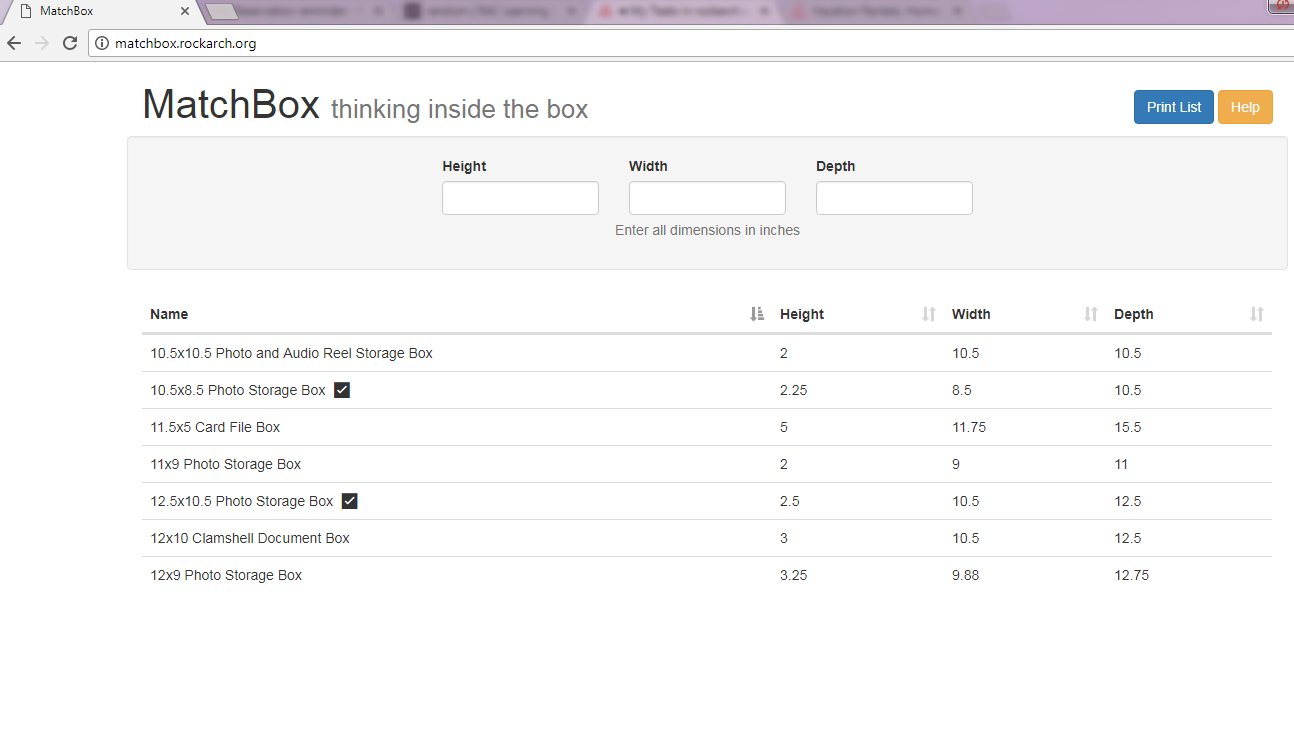It is hard to predict when inspiration is going to hit. While a great idea can strike quickly, realizing it is a longer process; one that often requires seeking the help and guidance of others. Luckily, at the RAC, I have coworkers who are ready to listen to new ideas and willing to help me figure out how to turn inspiration into reality. Today, I am very excited to share with you a recent example of such a collaboration and the RAC’s newest application: MatchBox.

We use a lot of boxes throughout the lifecycle of our material. With recent updates to ArchivesSpace, we are now able to track the container profiles for each of these boxes. This means that for each distinct type of box we use, we can record in our collection management software the name for a box and provide its measurements. This feature is already opening up possibilities for tighter vault control and planning. Our box types are almost as varied as our material. To date we have added over 50 profile containers to ArchivesSpace and expect that number to grow steadily as we take start to input audiovisual containers and flat file folders.
In my role on the Collection Management team, I think about housing for our photographic and three-dimensional objects. While working on a scrapbook with an unusually tall (4 inch) binding and failing to easily identify a box that could house that book, it occurred to me that the answer of what box could fit this item might lay, not in the supply closet, but in ArchivesSpace. I had a hunch that we could repurpose the container information already added to ArchivesSpace to help the staff better identify boxes for their projects.
I put out a call for help to brainstorm a tool and my co-workers stepped up to work on a tool that we later named MatchBox. As I mentioned at the beginning of this post, this was a cross-team collaboration. While the idea of the application was widely discussed, the main team driving the development of MatchBox consisted of Emeline Swanson (Collections Management), Erich Chang (CM), Hillel Arnold (Digital Programs), and me (CM). We met weekly to review development and plan next steps. During this process, we ended up building up our understanding of version control and the development process, and learned how to articulate our ideas and feedback on Github using issues and pull requests. When you are working from inspiration, it is easy to dream big and want to build out many features. Hillel did a good job at keeping the project on track and helped us keep the concept of minimal viable product (MVP) in mind. Another critical piece of the process what that we wanted this project to adhere with the principal of sharing out that the RAC defines itself. It was important to all of us that, if we were going to build such a tool, that it also could be used outside of the RAC.
So, what is MatchBox? It is an internally-facing application that allows users to search container profiles from their organization by entering measurements of the materials they need to house. As you enter in the depth, height, and width of your material, Matchbox eliminates boxes that are too small. Once you have an initial list of possible boxes, you can sort the remaining options to find a box that provides the best fit for the material. To help ease the decision process, we added check marks to box profiles that we order frequently and are the most likely to be in stock. Once you have a box list, you can print out the list and confidently head over to the supply room.
It is truly a joy to see MatchBox launched today and we hope that it ignites a passion to smarter box size selection for our archival material.